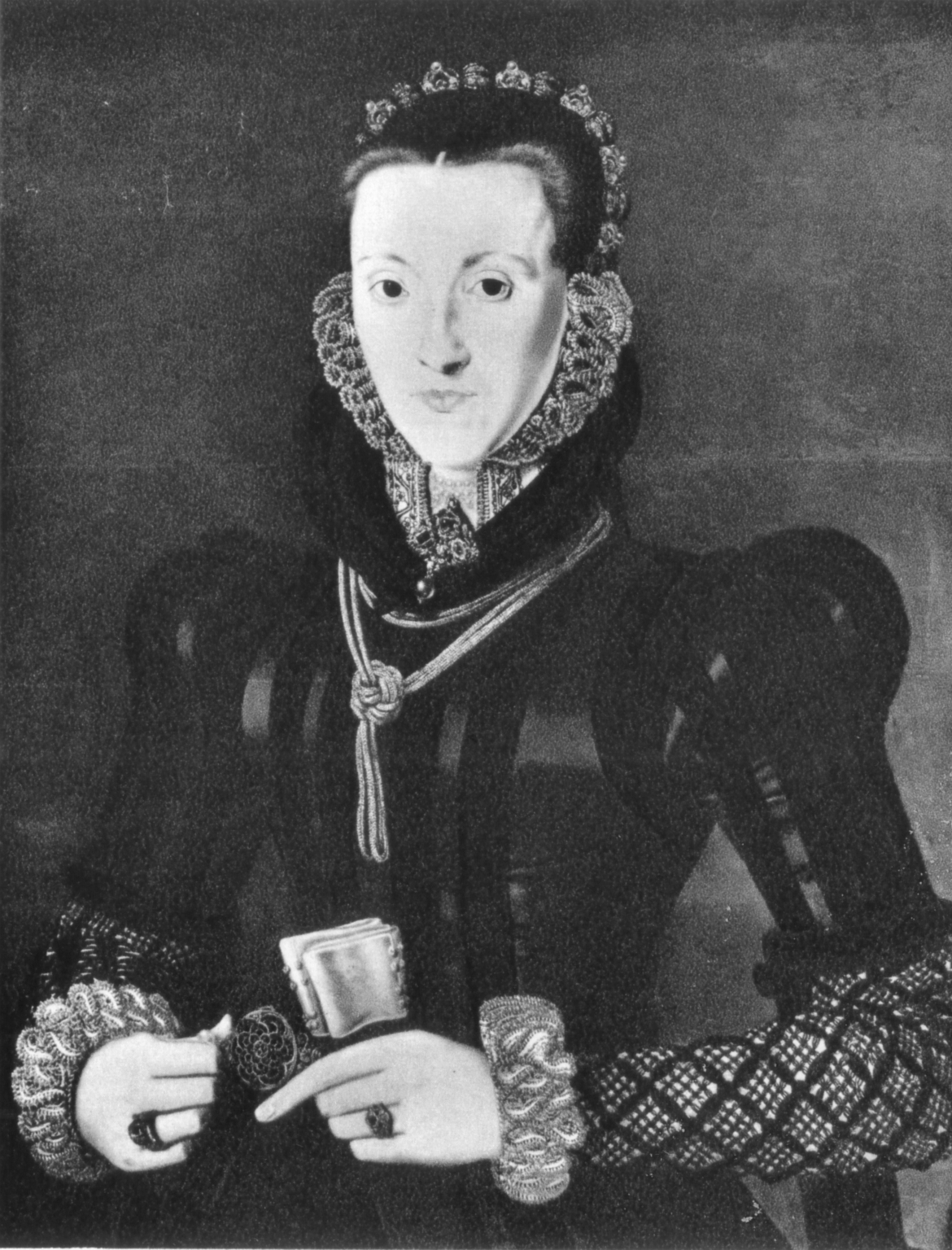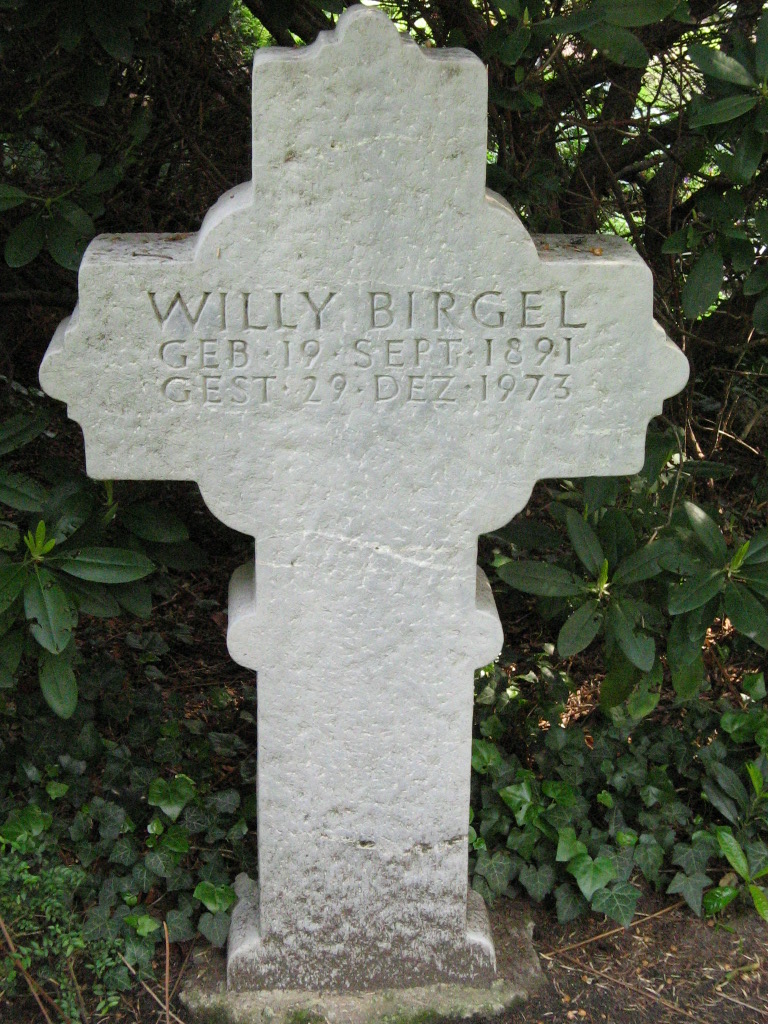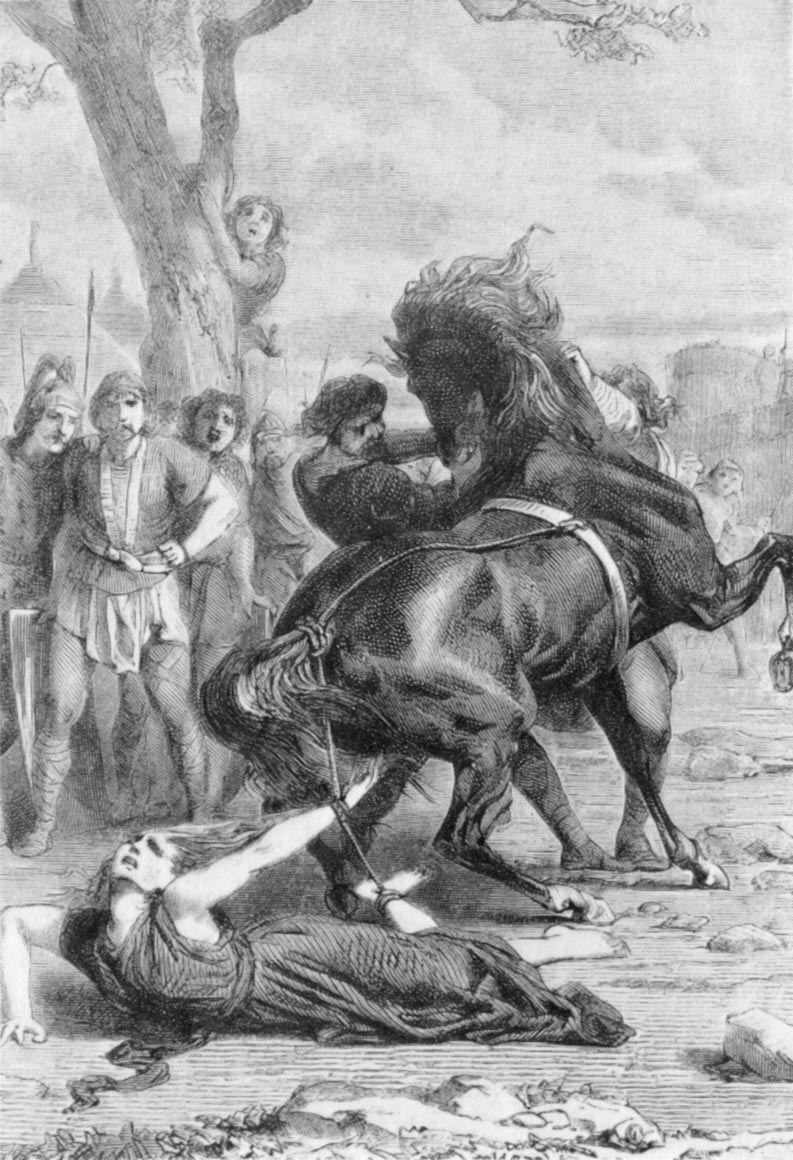|
Das Herz Der Königin
''The Heart of the Queen'' (''Das Herz der Königin'') is a 1940 German historical film, making selective use of the life story of Mary, Queen of Scots, and her execution by Queen Elizabeth I for anti-English and pro-Scottish propaganda, in the context of the Second World War going on at the time. It was shot at the Tempelhof Studios in Berlin. The film's sets were designed by the art director Walter Haag. Plot The film starts with Mary Stuart, Queen of Scots, held prisoner in Fotheringhay Castle, awaiting the final judgment in her case, which is expected within a few hours. Soon she finds out that the Royal Court has sentenced her, with the assent of Queen Elizabeth I, to be executed on the scaffold on the following day. She breaks down and remembers the events leading to her now imminent death. The bulk of the film consists of this flashback. The young Mary arrives from France to Scotland, as the lawful queen of Scots, only to encounter a strong opposition. Her half-broth ... [...More Info...] [...Related Items...] OR: [Wikipedia] [Google] [Baidu] |
Carl Froelich
Carl August Hugo Froelich (5 September 1875 – 12 February 1953) was a German film pioneer and film director. He was born and died in Berlin. Biography Apparatus builder and cameraman From 1903 Froelich was a colleague of Oskar Messter, one of the advance guard of German cinema, for whom initially he worked on the construction of cinematographic equipment. As cameraman for Messter's weekly newsreels he filmed among many other things the aftermath of a train accident on the Berlin elevated railway on 28 September 1908, one of the worst transport disasters of the time. Film director and producer Between 1912 and 1951 he made 77 films. In 1913 Froelich made his directorial debut with ''Richard Wagner (film), Richard Wagner'' (''see alo List of films about Richard Wagner''.) In 1920 he founded his own production company, Froelich-Film GmbH, among the productions of which were ''Kabale und Liebe'' (1921), ''Die Brüder Karamasoff'' (1922), and ''Mutter und Kind'' (1924). During thes ... [...More Info...] [...Related Items...] OR: [Wikipedia] [Google] [Baidu] |
James Stewart, 1st Earl Of Moray
James Stewart, 1st Earl of Moray (c. 1531 – 23 January 1570) was a member of the House of Stewart as the illegitimate son of King James V of Scotland. At times a supporter of his half-sister Mary, Queen of Scots, he was the regent of Scotland for his half-nephew, the infant King James VI, from 1567 until his assassination in 1570. He was the first head of government to be assassinated with a firearm. Early life Moray was born in about 1531, an illegitimate child of King James V of Scotland and his mistress Lady Margaret Erskine, daughter of John Erskine, 5th Lord Erskine, and wife of Sir Robert Douglas of Lochleven. On 31 August 1536, he received a royal charter granting the lands of Tantallon Castle, Tantallon and others. James was appointed Prior of St Andrews, Fife, in 1538.Sir James Balfour Paul, ''The Scots Peerage'', vol. 1 (Edinburgh: David Douglas, 1904), p. 23. This position supplied his income. Clothes for "lord James of Sanctandrois" and his brothers were made ... [...More Info...] [...Related Items...] OR: [Wikipedia] [Google] [Baidu] |
Axel Von Ambesser
Axel Eugen Alexander von Oesterreich (22 June 1910 – 16 September 1988), better known as Axel von Ambesser, was a German playwright, actor and film director. Ambesser's father was Alexander Constantin von Oesterreich. Ambesser was born in Hamburg and attended Wilhelm-Gymnasium (Hamburg), Wilhelm-Gymnasium. He appeared as a stage actor in the Hamburg Kammerspiele, and went on to play in the Stadttheater Augsburg, the Münchner Kammerspiele, from 1937 the Deutsche Theater Berlin, from 1942 the Staatstheater Berlin, and the Theater in der Josefstadt in Vienna. Works * ''Das Abgründige in Herrn Gerstenberg'', play, 1946 * ''Begegnung im Herbst'', play, 1967 Selected filmography Actor * ''The King's Prisoner'' (1935) - Tanzmeister * ''A Hopeless Case'' (1939) - Verehrer * ''Salonwagen E 417'' (1939) - Ursulas Bräutigam Werner * ''Die unheimlichen Wünsche'' (1939) - Jouet, Luftschiffer * ''Eine kleine Nachtmusik'' (1939) - Baron Egon * ''Ritorno'' (1940) * ''Traummusik'' (1940) - ... [...More Info...] [...Related Items...] OR: [Wikipedia] [Google] [Baidu] |
Jean Gordon, Countess Of Bothwell
Jean Gordon, Countess of Bothwell (1546 – 14 May 1629) was a wealthy Scottish noblewoman and the second wife of James Hepburn, 4th Earl of Bothwell. He became, after his divorce from Lady Jean, the third husband of Mary, Queen of Scots. Lady Jean herself had a total of three husbands. Upon her second marriage, she became the Countess of Sutherland. Family Lady Jean Gordon was born at Huntly Castle, sometimes called Strathbogie, in Aberdeenshire, the second eldest daughter of George Gordon, 4th Earl of Huntly, the wealthiest and most powerful landowner in the Scottish Highlands, and Elizabeth Keith. Her paternal grandparents were Lord Gordon and Margaret Stewart, illegitimate daughter of King James IV by his mistress, Margaret Drummond. Her maternal grandparents were Robert Keith, Master of Marischal and Lady Elizabeth Douglas. Jean had nine brothers and two sisters, and the family were brought up at Huntly Castle, which was modernised during the 1550s. Her father's ... [...More Info...] [...Related Items...] OR: [Wikipedia] [Google] [Baidu] |
Lotte Koch
Lotte Koch (9 March 1913 – 26 May 2013) was a Belgian-born German film actress. She emerged as a star during the Nazi era, appearing in the 1944 drama ''The Black Robe (film), The Black Robe''. Following the Second World War she appeared in several rubble films including ''And the Heavens Above Us'' (1947) with Hans Albers.Shandley p.211 Selected filmography * ''Lumpaci the Vagabond (1936 film), Lumpaci the Vagabond'' (1936) * ''The Heart of a Queen'' (1940) * ''Friedemann Bach (film), Friedemann Bach'' (1941) * ''Attack on Baku'' (1942) * ' (1943) * ''The Black Robe (film), The Black Robe'' (1944) * ''And the Heavens Above Us'' (1947) * ''Morituri (1948 film), Morituri'' (1948) * ''Search for Majora'' (1949) * ''Madonna in Chains'' (1949) * ''Captain Bay-Bay'' (1953) References Bibliography * Hake, Sabine. ''Popular Cinema of the Third Reich''. University of Texas Press, 2001. * Shandley, Robert R. ''Rubble Films: German Cinema in the Shadow of the Third Reich''. Temple ... [...More Info...] [...Related Items...] OR: [Wikipedia] [Google] [Baidu] |
Maria Koppenhöfer
Maria Koppenhöfer (11 December 1901 – 29 November 1948) was a German film actress. Selected filmography * '' The Opera Ball'' (1931) * '' 24 Hours in the Life of a Woman'' (1931) * '' Unheimliche Geschichten'' (1932) * ''The First Right of the Child'' (1932) * ''A Song for You'' (1933) * ''So Ended a Great Love'' (1934) * ''Frisians in Peril'' (1935) * ''Joan of Arc'' (1935) * '' The Abduction of the Sabine Women'' (1936) * '' The Ruler'' (1937) * '' The Mountain Calls'' (1938) * '' Shadows Over St. Pauli'' (1938) * '' Anna Favetti'' (1938) * '' The Great and the Little Love'' (1938) * ''Midsummer Night's Fire'' (1939) * '' Kora Terry'' (1940) * '' Bismarck'' (1940) * ''The Heart of a Queen ''The Heart of the Queen'' (''Das Herz der Königin'') is a 1940 German historical film, making selective use of the life story of Mary, Queen of Scots, and her execution by Queen Elizabeth I for anti-English and pro-Scottish propaganda, in the ...'' (1940) * '' Lightning Around Barbara ... [...More Info...] [...Related Items...] OR: [Wikipedia] [Google] [Baidu] |
Willy Birgel
Willy Birgel (19 September 1891 – 29 December 1973), born Wilhelm Maria Birgel, was a Germans, German theatre and film actor. Career Birgel began his acting career before World War I on the stage in his native city of Cologne, and came to movies rather late. He was about 43 years old before he got his first major film role as the English camp commandant in Paul Wegener's ''A Man Wants to Get to Germany''. This UFA-production that premiered on 26 July 1934, portrays a German engineer living in South America who hears in 1914 of war in Europe. Realising his obligation to his ''Fatherland'', he sets out for Europe, joined by a German comrade. The journey to Germany involves physical hardships, treacherous terrain, and hostile seas, obstacles faced by patriots who have only one thought: to return home to Germany to help a fatherland under attack. The film spoke of the kind of German values that were emphasized in Nazi Germany. Similar films made by Birgel for the National Sociali ... [...More Info...] [...Related Items...] OR: [Wikipedia] [Google] [Baidu] |
Walther Suessenguth
Walther () is a masculine given name and a surname. It is a German form of Walter, which is derived from the Old High German ''Walthari'', containing the elements ''wald'' -"power", "brightness" or "forest" and ''hari'' -"warrior". The name was first popularized by the famous epic German hero Walther von Aquitaine and later with the Minnesänger Walther von der Vogelweide. Given name * Walther Bauersfeld (1879–1959), German engineer who built the first projection planetarium * Walther Bothe (1891–1957), German nuclear physicist and Nobel laureate * Walther von Brauchitsch (1881–1948), German World War II field marshal * Walther Dahl (1916–1985), German World War II flying ace * Walther von Dyck (1856–1934), German mathematician * Walther Flemming (1843–1905), German biologist and a founder of cytogenetics * Walther Funk (1890–1960), economist and Nazi official convicted of war crimes in the Nuremberg Trials * Walther Hahm (1894–1951), German World War II genera ... [...More Info...] [...Related Items...] OR: [Wikipedia] [Google] [Baidu] |
Frame Story
A frame story (also known as a frame tale, frame narrative, sandwich narrative, or intercalation) is a literary technique that serves as a companion piece to a story within a story, where an introductory or main narrative sets the stage either for a more emphasized second narrative or for a set of shorter stories. The frame story leads readers from a first story into one or more other stories within it. The frame story may also be used to inform readers about aspects of the secondary narrative(s) that may otherwise be hard to understand. This should not be confused with narrative structure. Notable examples are the ''1001 Nights'' and ''The Decameron''. Origins Some of the earliest frame stories are from ancient Egypt, including one in the Papyrus Westcar, the ''Tale of the Shipwrecked Sailor'', and ''The Eloquent Peasant''. Other early examples are from Indian literature, including the Indian epic poetry, Sanskrit epics ''Mahabharata'', ''Ramayana'', ''Panchatantra'', Syntipas ... [...More Info...] [...Related Items...] OR: [Wikipedia] [Google] [Baidu] |
Dragging Death
A dragging death is a death caused by someone being dragged behind or underneath a moving vehicle or animal, whether accidental or as a deliberate act of murder. Instances of dragging death * Antonio Curcoa (1792; Chile) * James Byrd Jr. (1998; Texas, US) * João Hélio (2007; Brazil) * Brandon McClelland (2008; Texas, US) * Mido Macia (2013; South Africa) * Farkhunda Malikzada (2015; Afghanistan) * Andrew Harper Andrew Harper (13 November 1844 – 25 November 1936) was a Scottish–Australian biblical scholar, teacher, and school and university college principal. Early life Harper was born at 167 Main Street, in the Gorbals in Glasgow, Scotland, son ... (2019; England) See also * Keelhauling References {{DEFAULTSORT:Dragging Death Causes of death Murder Murders by motor vehicle ... [...More Info...] [...Related Items...] OR: [Wikipedia] [Google] [Baidu] |
James I Of England
James VI and I (James Charles Stuart; 19 June 1566 – 27 March 1625) was King of Scotland as James VI from 24 July 1567 and King of England and Ireland as James I from the union of the Scottish and English crowns on 24 March 1603 until his death in 1625. Although he long tried to get both countries to adopt a closer political union, the kingdoms of Scotland and England remained sovereign states, with their own parliaments, judiciaries, and laws, ruled by James in personal union. James was the son of Mary, Queen of Scots, and a great-great-grandson of Henry VII, King of England and Lord of Ireland, and thus a potential successor to all three thrones. He acceded to the Scottish throne at the age of thirteen months, after his mother was forced to abdicate in his favour. Although his mother was a Catholic, James was brought up as a Protestant. Four regents governed during his minority, which ended officially in 1578, though he did not gain full control of his governmen ... [...More Info...] [...Related Items...] OR: [Wikipedia] [Google] [Baidu] |
Henry Darnley
Henry Stuart, Lord Darnley (1546 – 10 February 1567) was King of Scotland as the second husband of Mary, Queen of Scots, from 29 July 1565 until his murder in 1567. Lord Darnley had one child with Mary, the future James VI of Scotland and I of England. Through his parents, he had claims to both the Scottish and English thrones.Elaine Finnie Greig, 'Stewart, Henry, duke of Albany ord Darnley(1545/6–1567)', Oxford Dictionary of National Biography, Oxford University Press, 2004; online edn, Jan 200accessed 4 March 2012/ref> Less than a year after the birth of his son, Darnley was murdered at Kirk o' Field in 1567. Many contemporary narratives describing his life and death refer to him as simply ''Lord Darnley'', his title as heir apparent to the Earldom of Lennox. Origins He was the second but eldest surviving son of Matthew Stewart, 4th Earl of Lennox, by his wife Lady Margaret Douglas, which supported his claim to the English succession. Darnley's maternal grandparents wer ... [...More Info...] [...Related Items...] OR: [Wikipedia] [Google] [Baidu] |





